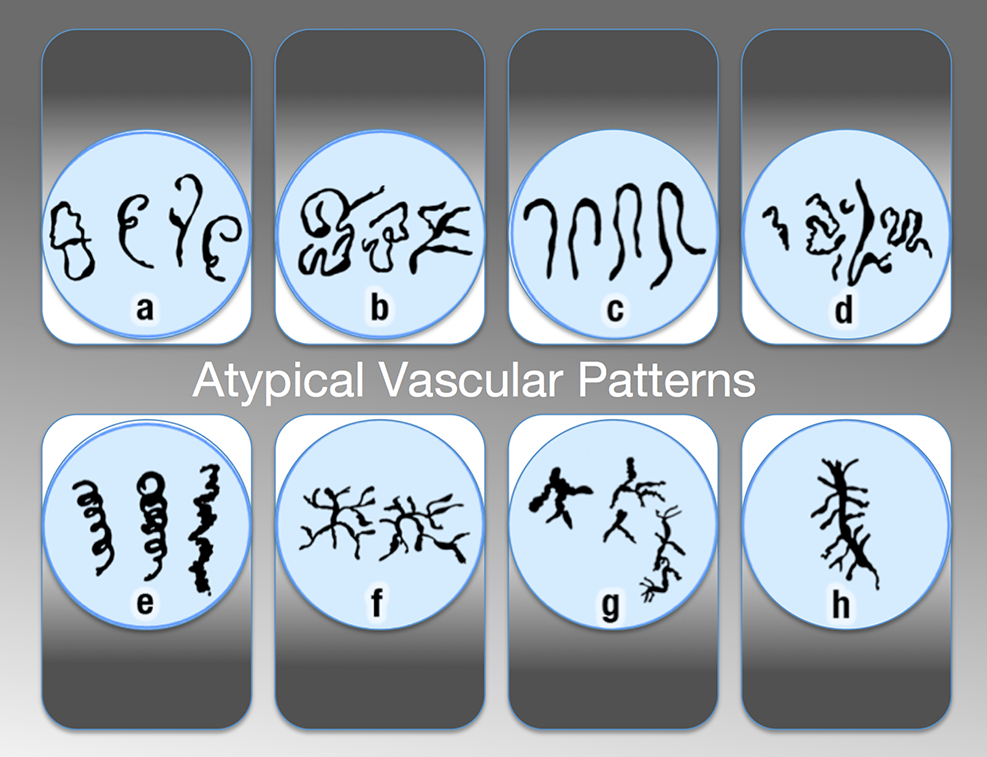Secondary Prevention of Cervical Cancer
Atypical Vessels
Atypical Vessels
Atypical vessels are present in invasive cancer.
Atypical vessels are the hallmark of invasive cervical cancer and are best demonstrated with a green filter on an unstained tissue.
By definition, atypical vascular patterns are pathognomonic for malignancy. A variety of atypical vascular patterns may be seen such as an irregular shape, abnormal branching, or abrupt caliber changes. Hairpin loops (c) and corkscrew capillaries (e) are specific examples. Any vessel that does not show a regular branching pattern is classified as atypical. It should be noted, however, that inflammatory processes unrelated to cancer are also associated with neovascularization. This type of angiogenesis is difficult to distinguish from the neovascularization of tumors. Thus, in order to determine the diagnostic significance of atypical vessels, the colposcopist must look for other malignant features such as necrosis, erosion, ulceration, exophytic or endophytic growth, bleeding, and/or opaque acetowhiteness. If the diagnosis is at all uncertain, a biopsy must be obtained.
